US-Sport
NFL: Column: Playoff Picks, the Colts Open – and Brady’s Problem
Week 10 in the NFL and the playoff picture becomes clearer – except in the NFC East. Who will be the favourite in the final sprint of the season for the MVP title and the other awards? Which teams get a wildcard? What’s going on in Seattle, what problems do the Patriots have – and what does the Kupp injury mean for the Rams? Also: what makes the Offense of the Indianapolis Colts so strong this year?
You want to ask questions to the SPOX-NFL column? This goes right here to the author!
The Indianapolis Colts are one of this season’s under-the-radar surprises and a team that may even have a say in the AFC wildcard race. The Colts are on an extremely good, promising path and a very hot candidate to be in the title window in two years; and that starts with the passing game.
Andrew Luck hasn’t been sacked since week 5, or 189 dropbacks in a row. Of quarterbacks with at least 400 passes, only Roethlisberger, Brees, Brady, Flacco and Trubisky are under less pressure in percentage terms. This year Luck had four games with zero sacks, between 2012 and 2016 he had seven such games. No question about it – he plays behind the best offensive line of his NFL career.
Against the Jaguars, he took two QB hits, and over the last three games, Luck won a good 72 percent of his passes for 680 yards, ten touchdowns and an interception. And there’s one thing that stands out: the Colts are incredibly good at integrating the tight ends into the passing game this year. Maybe better than any other team.
This was perhaps the clearest against the Jaguars, and some of the most creative tight-end play designs currently seen in the NFL were visible in this game. Ten targets saw the tight ends against Jacksonville, with which Indianapolis repeatedly attacked the linebackers extremely well.
The first big play of the game also came via an in-line tight end and a route combination that made room for the tight end.
The Colts like to use their running back on the side of the primary tight-end read to cover a linebacker or safety on the side and ideally overload one side of the formation or force a defender to choose between two receivers.
This play shows the creativity in dealing with the tight ends. The colts come out in a tight formation and at first down so pre-snap hint at the run.
In fact, there is also a play-action fake, which pulls the defense more in the direction of the line of scrimmage – play action at first down from an I formation is an incredibly efficient concept, especially if you have this line and luck under center.
The tight end is in the backfield as a supposed lead blocker. Instead, after the snap there is again the (successful) attempt to attack one side of the Line of Scrimmage: The outside receiver on the left side of the formation removes the cornerback with a vertical route, the tight end from the backfield runs a mid-range route in the direction of the sideline.
He is supported by the running back, which also runs a short route into the flat after the play action fake. The result is a very good space gain at first down with a play where you force the defense into your base personnel.
And it went on like this, this game was an example of how to use tight ends in a creative and versatile way and surprise them with formations. That’s the 27-yard pass to Alie-Cox just before the end of the first quarter of the Colts’ second touchdown drive, and the way Indianapolis enters the vertical passing game is especially exciting.
The Colts come out with 13-personnel – one running back, three tight ends and only one wide receiver – and play a 4-Verts concept, four vertical routes. The three tight ends are on one side, the running back is from the backfield pre-snap on the left formation in the slot.
Two tight ends deep routes run out of it, the third tight end positioned outside occupies the outside-cornerback with a comeback route.
And the Colts use their tight ends – where others rely primarily on wide receivers – for End Arounds as well. That’s Ebrons touchdown run straight to the end of the first quarter.
Again it is a close formation, with blockers on both sides. So Jacksonville has to count with a run through the middle, just like with a run on both sides. A tight-end run is not often seen in this area of the field, but Ebrons athletics allows the Colts a certain variety.
Ebrons touchdown catch with just over nine minutes on the clock in the second quarter was another variation of attacking one side of the defense with running back and tight end while the receivers are set up on the other side of the formation.
On the one hand, this can provide an indication of the coverage – does the defense change its formation or does the cornerback remain on the wide receiver-free side? and the goal again is to attack individual defenders at different depths.
And in this case it ends with a coverage-breakdown by the Jaguars, where the linebacker takes over the running back, but behind it the voting doesn’t fit and nobody is responsible for Ebron.
It is no coincidence that Eric Ebron is playing the best season of his career after a frustrating time in Detroit. Or that a player like Mo Alie-Cox, the third tight end of this team, against the Jaguars Defense sees four targets. Or that Jack Doyle, who has been plagued by injuries this season, has an average of six targets per game when he plays.
The Colts are an Offense, which is mainly built up over the Tight Ends. Where other teams come through motion (chiefs), versatile formations (saints), or hard-to-read and tightly connected play designs (rams), the colts rely on tight ends to force defenses into their base personnels and into more easily predictable coverages.
The development in Indianapolis is absolutely promising. And if the Colts manage to get reliable production from some of the many young starters in the defense, then you will have to expect Indy very soon.
The jets will obviously not fire Todd Bowles during the season. This is – to say the least – difficult to understand and gives the outstanding jets games a very strange aftertaste.
That Bowles would no longer be the head coach in New York next year had been suggested for some time. The Jets have made little progress as a team over the last few years, Bowles is anything but good at in-game management and this coaching staff does not seem to be the right choice to drive Sam Darnold’s development forward – the top priority in New York.
Last week I wrote that I expected to be dismissed at the end of the season. This completely bloodless, embarrassing performance against a hopeless Bills team – and especially how Bowles’ Defense fell apart against Matt Barkley – leaves the jets no choice in my eyes: the dismissal must now take place.
This team desperately needs a restart, and such a desolate game against another cellar child, but which has impressively shown how to present oneself in front of Bye Week, is the red carpet for the end.
Then what? The jets finally have to break away from their own mantra, and after many years they have to hire again a head coach with an offensive background. A coach with a coaching staff best equipped to develop Darnold. Be it John DeFilippo, Lincoln Riley, Matt LaFleur or any other candidate. And then, in the next step, in the Free Agency and in the draft, the majority of resources must be put into the offense. That’s how you win in the NFL today.
The victory of the Titans over the Patriots was unexpectedly clear and in the course of the match very rarely really in danger. It wasn’t foreseeable and shouldn’t panic Pats fans right away – but a trend, which is a bit alarming, can be seen in New England in the meantime; and it doesn’t concern anyone else than Tom Brady.
Brady had three of his worst games of the season against Detroit, the Packers and now Tennessee. This is no coincidence, because these defenses attacked New England with a similar approach: with complex coverages and versatile pressure and lightning packages to present as many other things as possible to the quarterback post snap than he could supposedly recognize before the snap.
These teams were out to take Brady’s first read and not present him with a clear matchup to make the post-snap reads as hard as possible for him. And that worked. If Brady holds the ball longer than 2.5 seconds this season, his completion rate drops by almost 30 percent, one of the highest discrepancies. His touchdown-to-interception ratio drops to 2-1 on these plays, at eye level with Fitzpatrick, Trubisky or Prescott; Brady has big problems with the flash this year.
This is of course not something that has to stay that way for the rest of the season. Especially when the Patriots Josh Gordon and Rob Gronkowski get fit together on the field over a longer period of time, teams with their safetys will play differently and have to react more than act. However, it is a conspicuous trend that other defenses will observe. The Vikings in week 13 could be the next test for this.
Yes, the Los Angeles Rams are one of the best offenses when it comes to play designs and play calling, and they will be able to absorb Cooper Kupp’s serious injury better than most teams would be able to. Josh Reynolds will presumably slip back into the role; but this injury will also – or perhaps just – make itself felt in this scheme.
Not to mention that Kupp is in perfect harmony with Goff and one of the most dangerous mid-range slot receivers in the NFL today (2.42 yards per slot route run, the second highest of all players with at least 100 slot snaps behind Tyreek Hill), the general approach of the Rams-Offense is also strongly on Kupp.
No team plays more 11-personnel – i.e. 3-WR sets – than the rams, the whole offense builds on them; just like the receiver on the route running, which has to keep open as long as possible whether it blocks or actually runs a route. A central strength of this Rams open is the play designs, which are extremely similar: Defenses often do not know whether a run, a pass or a play action pass comes.
That gives Todd Gurley so many light boxes, that gives Jared Goff open receivers especially in the Play Action Game. Reynolds – presumably – will not only be a clear starter, he may also not become the player to use the defender as a key-read to guess plays. It is also conceivable that McVay is now forced to deviate somewhat from his scheme: when Kupp dropped out a few weeks ago, the Rams had noticeably more 2-TE sets in their game plan.
Are the Philadelphia Eagles the most frustrating team this season? I’d go that far by now. In terms of potential – both offensive and defensive – Philly should be the clear leader of this division. Washington has one of the NFL’s most limited passing games and is decimated by injuries, while the cowboys are on Washington’s passing offense level and Dak Prescott is still trying to find a more constant track.
Both teams come via the Run Game, in a passing league – and with a theoretically much better passing game in person of the Eagles in their own division. But with Philly, play calling remains just as much a problem as pass protection and the run game, and as long as the Eagles don’t get consistency in here, they will continue to have problems.
I have always defended the Eagles over the last weeks, but Washington has the simpler schedule and with two more wins the clear advantage as far as the starting position is concerned. The Eagles are now in serious danger of turning the defending season into a disappointment without play-offs.
Page 1: The Colts Offense, Brady’s Problems, Kupps Injury – and the Jets
Page 2: MVP and Awards, Wildcard Teams, Prescott, Russell Wilson – Your Questions


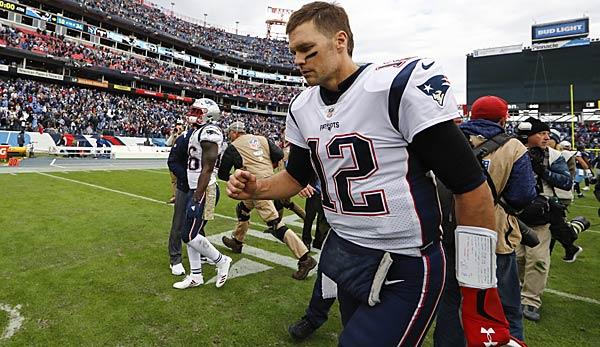

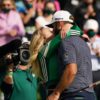


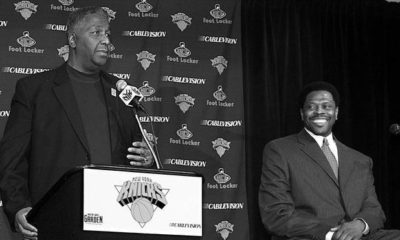
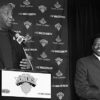
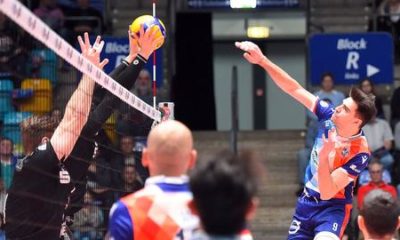
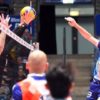
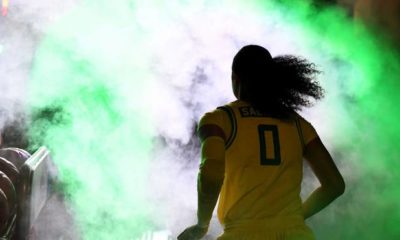
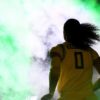





You must be logged in to post a comment Login